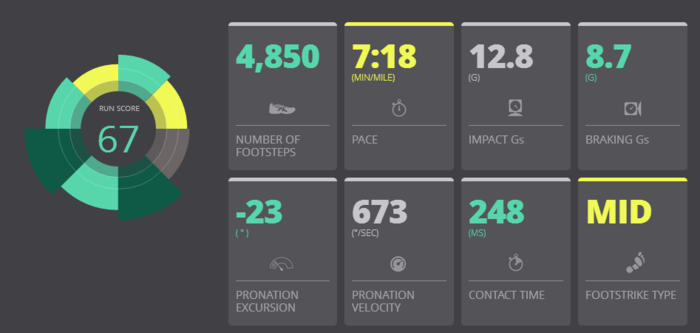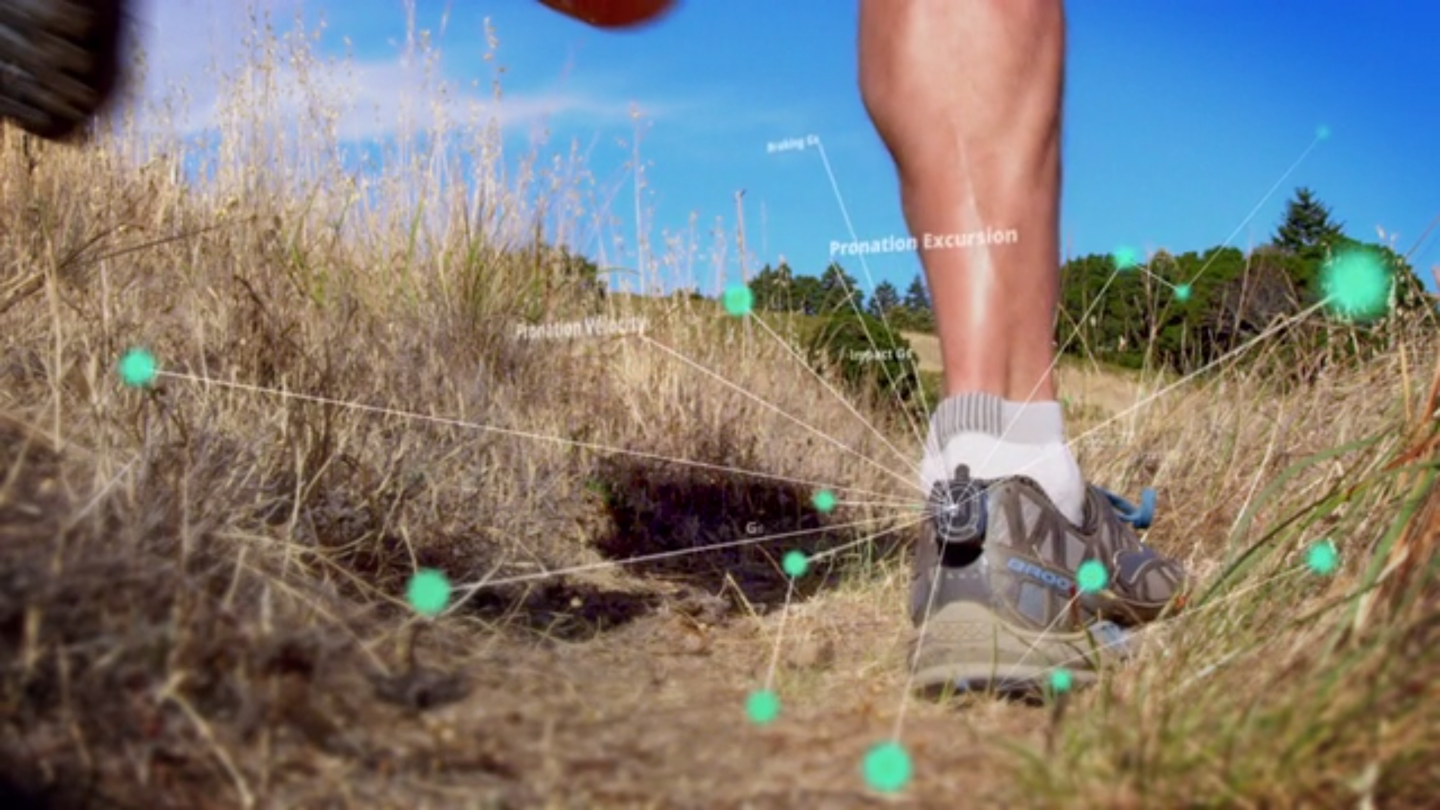From the Jawbone Up24 to the Samsung Gear Fit, there is a wide range of fitness trackers on store shelves. So if a new piece of technology wants to stand out, it has to offer something above and beyond what’s out there in the wild. Kickstarter project runScribe aims to do just that, providing runners with an unparalleled level of data by accurately tracking the movement of their feet during the gait cycle.
Unlike competing devices, runScribe doesn’t just track basic stats like steps, distance and speed, but digs a little deeper, collecting information on 13 kinematic metrics by means of a small 9-axis sensor that attaches to the heel of almost any shoe.
These metrics include pace, impact Gs, braking Gs, pronation excursion, pronation velocity and more. The goal is to create a comprehensive statistical picture that lets the runner study the mechanics of their stride, identifying changes brought about by terrain, distance and even choice of footwear. Users will be able to see the data by means of a series of visualisation tools.

The device itself weighs just 15 g (0.03 lbs), and attaches to any shoe by either a clip or a supplied adhesive. The data is stored locally on the wearable, allowing you to leave other devices at home. Data is then automatically uploaded via a Bluetooth connection to an Android or iOS device.
Despite its name, the runScribe isn’t being targeted solely at runners. The device’s ability to accurately track the movement of the user’s shoe means that it can also be used to record flight time over hurdles, or to measure impact Gs, braking Gs and contact time in the last few critical steps of a high jump.
Another interesting aspect of the wearable is its ability to crowdsource injury statistics. According to Scribe Labs, the creator of the Kickstarter effort, up to 65 percent of runners experience some sort of injury in any given year.
There are such a variety of possible causes for injuries, so trying to nail down a list of causes is extremely difficult. If all goes to plan, runScribe will be collecting an unprecedented amount of data that the team plans to feed into the research community in an effort to better identify said factors.

Each user's running data is collected and stored, and once they've been using the tech for a while, it will provide them with a runScore. This looks at collected data from each run in context of past sessions, helping gauge how well they've performed and where they're going wrong, allowing them to correct their technique or regime accordingly.
One thing that the runScribe lacks in its current form is GPS integration. However, this is something that the team plans to look at, having already hit its US$100,000 stretch goal.
There are no plans to put GPS tech inside the wearable itself, but users should be able to sync with existing GPS watches or apps that already record your route, providing a map that clearly shows where their metrics varied throughout a run.

With the Kickstarter campaign already more than doubling its $50,000 target, the first production runScribe units are expected to ship in November. The product is in its sixth stage of hardware prototypes, and the company says that it's currently putting the finishing touches on software.
There are several version of the runScribe tech. The basic Starter pack comes in at US$99, and provides access to six metrics, while a more fully featured Pro version of the kit starts at $139 and gives access to all 13 metrics. The pricier option also grants entry to select features like the ability to create and access data that displays how different shoes affect performance.
You can check out the Kickstarter campaign video below for more on the wearable.
Source: Scribe Labs, Kickstarter









